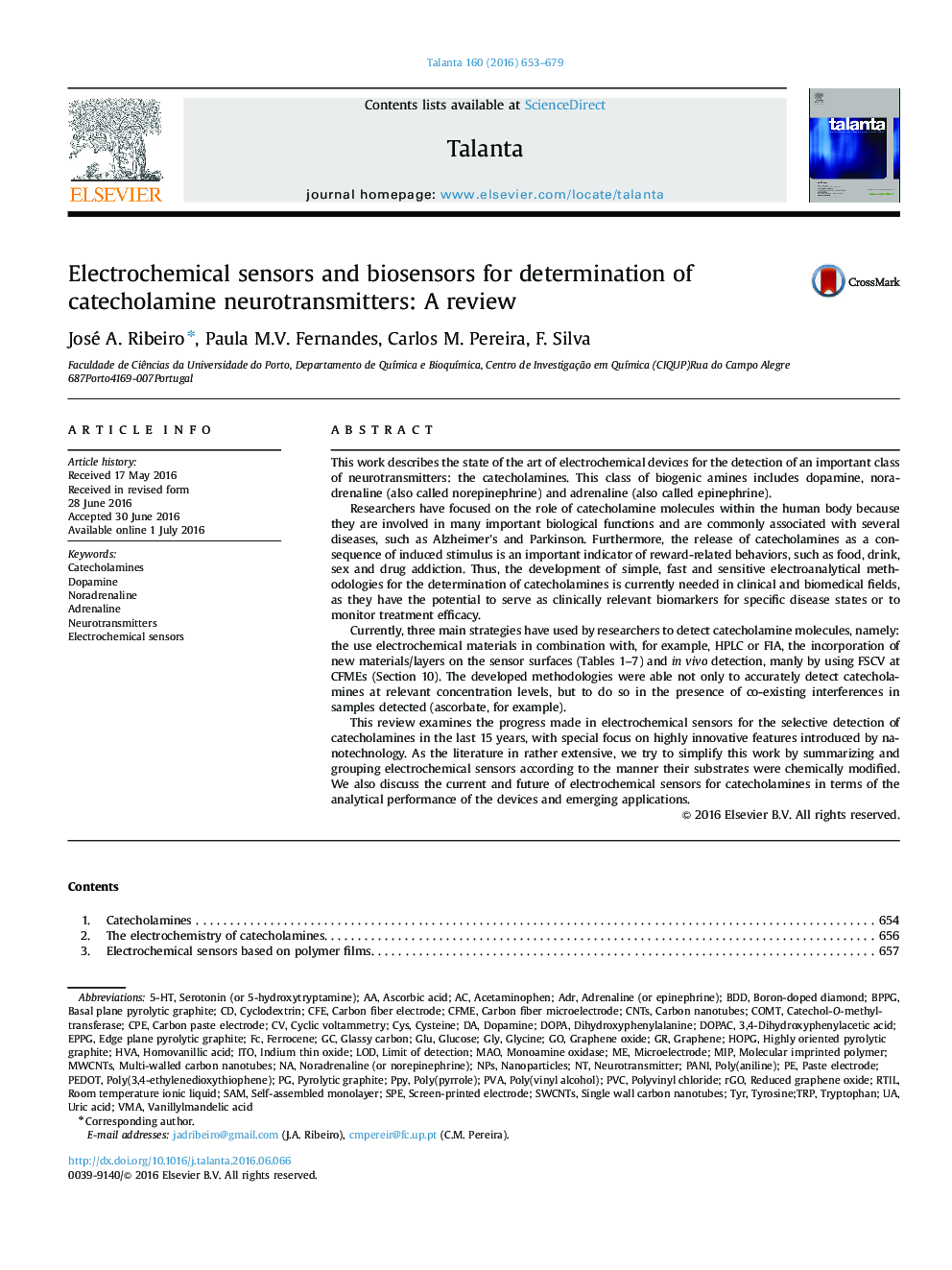| Article ID | Journal | Published Year | Pages | File Type |
|---|---|---|---|---|
| 1243306 | Talanta | 2016 | 27 Pages |
•Review about electrochemical sensors and biosensorst for detection of catecholamines.•Determination of NTs can be a powerful tool as biomarkers for several diseases.•Special focus on the detection of catecholamines using nanomaterials.•Critical comparison of the analytical parameters of the different groups of sensors.
This work describes the state of the art of electrochemical devices for the detection of an important class of neurotransmitters: the catecholamines. This class of biogenic amines includes dopamine, noradrenaline (also called norepinephrine) and adrenaline (also called epinephrine).Researchers have focused on the role of catecholamine molecules within the human body because they are involved in many important biological functions and are commonly associated with several diseases, such as Alzheimer's and Parkinson. Furthermore, the release of catecholamines as a consequence of induced stimulus is an important indicator of reward-related behaviors, such as food, drink, sex and drug addiction. Thus, the development of simple, fast and sensitive electroanalytical methodologies for the determination of catecholamines is currently needed in clinical and biomedical fields, as they have the potential to serve as clinically relevant biomarkers for specific disease states or to monitor treatment efficacy.Currently, three main strategies have used by researchers to detect catecholamine molecules, namely: the use electrochemical materials in combination with, for example, HPLC or FIA, the incorporation of new materials/layers on the sensor surfaces (Tables 1–7) and in vivo detection, manly by using FSCV at CFMEs (Section 10). The developed methodologies were able not only to accurately detect catecholamines at relevant concentration levels, but to do so in the presence of co-existing interferences in samples detected (ascorbate, for example).This review examines the progress made in electrochemical sensors for the selective detection of catecholamines in the last 15 years, with special focus on highly innovative features introduced by nanotechnology. As the literature in rather extensive, we try to simplify this work by summarizing and grouping electrochemical sensors according to the manner their substrates were chemically modified. We also discuss the current and future of electrochemical sensors for catecholamines in terms of the analytical performance of the devices and emerging applications.
Graphical abstractFigure optionsDownload full-size imageDownload as PowerPoint slide
